Cursive Writing Practice Sheets A-z
Most Russians do not use block letters when writing by hand. You must learn to read and write a script. Because all of you will meet the situation when at some websites, journals or newspapers you will need the text written with typed cursive. And you need to be able to recognize it. Because sometimes it can be really confusing. Some letters look like English ones, for example, Russian Т - looks like English M in cursive. So you can read it wrong if you don't know how to read it. Also for those people who would like to increase their speed of writing, I recommend learning how to write in Russian with cursive letters because it really will help you to save time. But I know that some people just do not write at all. They use just tablets, computers, cell phones and then for you it's not necessary but at least you need to be able to read in Russian!
Maybe in one day, you will able to read this medical handwriting: ;-)

- Why should I learn to write in cursive?
- Educational material
- Read Russian cursive
- Russian capital and small written letters
- How to Write Russian Handwritten Letters Correctly
- Russian cursive handwritten alphabet
- Video Russian cursive letters
- Connecting the Russian Handwriting Cursive Letters
- Calligraphy Russian Cursive Letters
- Russian cursive writing with printed letters.
I'll give you a few reasons why you should learn to write in handwritten cursive:
1. The writing is very helpful for to memorize the words or at least will help you memorize even if you write things down as there's no guarantee you memorize it. Later you still have to memorize them something through some other ways like using flashcards (I recommend Quizlet). But still writing the Russian a word down and then his translation is going to help you memorize.
2. What if you wrote all in caps what would happen? What happens when you write everything caps in English? It looks like you're yelling or it looks like you are four years old or five whatever right before you learn to write in cursive in kindergarten. I mean learning Russian is hard it takes a long time to put sentences together. You already sound like a little kid. So why when you're writing?
3. Russian cursive is beautiful handwriting especially.
A lot of scientists are now discovering that learning cursive is an important tool for cognitive development because it teaches the brain functional specialization. That's what allows your brain to integrate things like sensation movement and thinking in the most efficient way possible brain imaging.
Studies show that writing in cursive unlike typing activates multiple areas of the brain at once and is excellent for fine motor coordination. It also helps develop good thinking skills. Research finds that writing letters in a meaningful context instead of just copying or tracing them produces even more robust activity in both hemispheres of the brains.
There's actually a study done at Indiana University where a psychologist took a group of preliterate five-year-old kids and had them perform various tasks related to reading and writing while undergoing a brain scan turns out. The kids who practiced writing even if it was in print and not cursive displayed significantly more neural activity that kids who were simply looking at letters. That's right even writing in print is better for you that typing. But there's something unique about cursive that makes it just so good for the brain.
According to scientists, cursive is more demanding than print in terms of movement tasks and the broad range of letter styles enhances our visual recognition skills. They also say it engages students more by giving them a better sense of style and ownership over their own handwriting. It's also been shown to enhance creativity a 2012 study from the University of Washington found that children in grades 2 through 6 wrote more words faster and expressed more ideas when writing by hand versus with a keyboard.
A lot of experts compare writing like this to learning a musical instrument in terms of the benefits it has for your brain. Of course, not everyone has the money to pay for music lessons but you know what doesn't cost $50 an hour a pencil and paper.
I hope one day you will write like a Russian 1-grader from 1956 :-)):
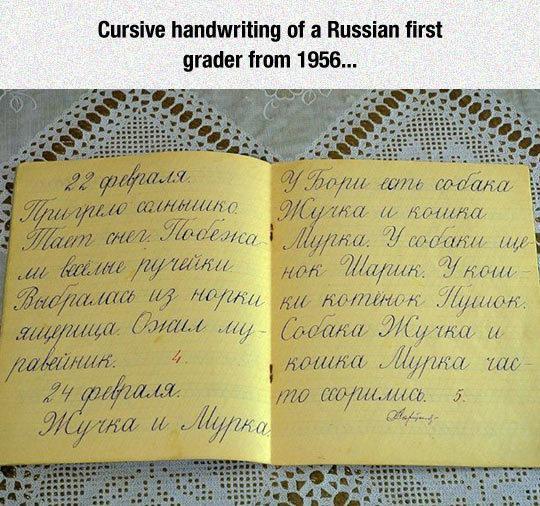

This is great because it's a well-designed textbook that shows the direction of the strokes of each letter (uppercase and lowercase) with sidelines to improve the height and slope of the letters. It starts with the simple letters (which are very similar to the English letters) as "A", "M", "P", and from here you can practice connecting the letters together and working on smooth writing (i.e. H. Mama, Papa).
Russian Handwriting: Propisi (Volume 1) ->>

There are so many tracing books available for English letters and all the tracing books for Russian I had were shipped from Russia, so this workbook was a savior. Lots of tracing activities to learn the letters, there is a certain order from simpler to more complex lines and additional tracing exercising of pictures that are interesting for the kids. Lovely design. The kids practice tracing the letters and then can practice just writing them. Depending on the age, erasing and making the child redo the letter again at a later time was very helpful. It's not a think workbook.
Propisi: Russian Letters: Trace and Learn (Propisi for Children) (Volume 1)->>

The Primer shows the directions of each letters' stroke, upper and lower cases, with page lines to help with the height and the incline of the letters to the right. It starts with the basic elements of the letters needed to be traced over, then the letters themselves, and from this you can practice connecting the letters together and work on smooth writing in accordance with the examples.
Russian Handwriting Propisi: A beginner's workbook with illustrations ->>

The manual is intended for bilingual students who speak Russian in the family but did not study in a Russian-language school or studied in such a school for only a short time. It can also be used for students studying Russian as a foreign language at an advanced level (above B1).
Learn to Write in Russian: Uchimsia Pisat' PO-Russki (Russian Edition) ->>

The workbook for learning the letters of the Russian alphabet and traditional Russian cursive writing and penmanship, developing fine motor skills.
Propisi 1: Learn Russian Alphabet (Preschool Workbook on Handwriting): A tracing workbook for Russian language learners (Volume 1) (Russian Edition)->>
You can see that the big letters are very easy recognizable because they are like the same as normal typed letters. But the small ones look a little bit different. Let's mark those letters that you need to remember and there are only 7 small letters, not capitals letters but smaller ones that really are very confusing. So take a look at them.
It's б - try to remember how it looks, than в - looks like in English cursive letter b.
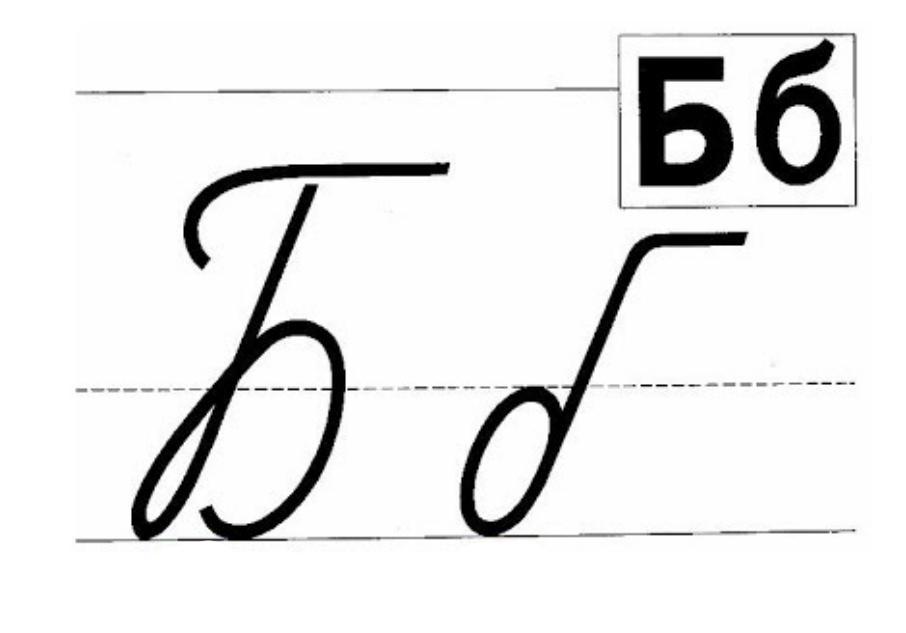
The most unusually is г (g) - looks like English s but to the opposite side.
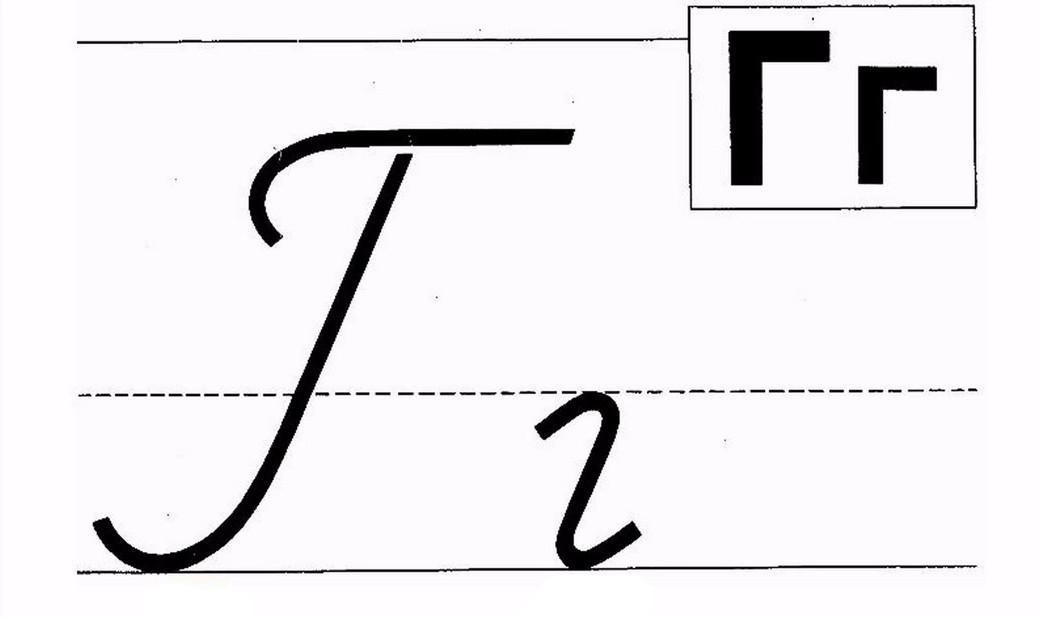
д - it looks really strange, it's very similar to б so when you are reading the text be attentive and try to remember it. б looks at the same side as the big letter while д just looks to the opposite sides, not to the same as big letter Б in Russian.
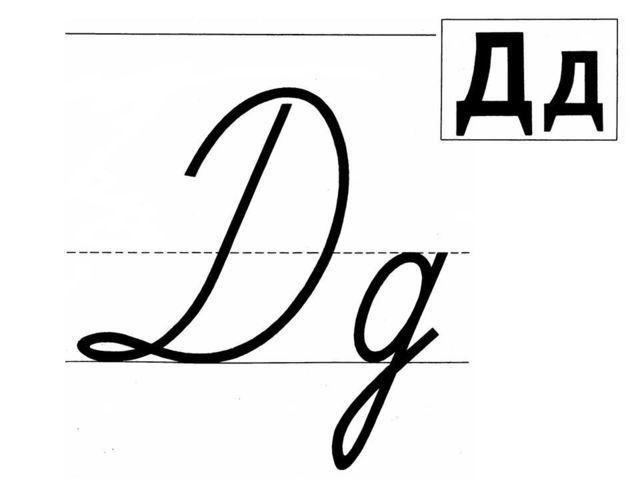
и and й - they are almost the same the difference is with a small sign only. You need to remember that this letter is и in Russian or й - и краткое - и short. Because sometimes people confuse it with English u because it's very similar.

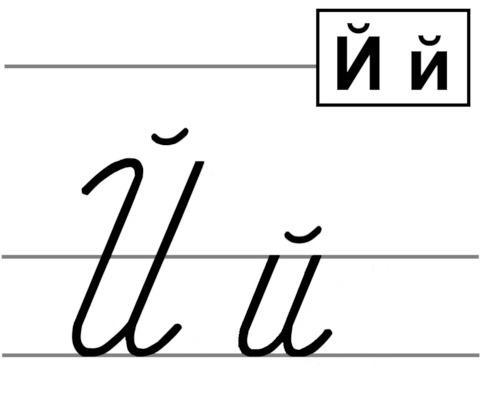
т - this one is the most confused because it looks like English m (em).
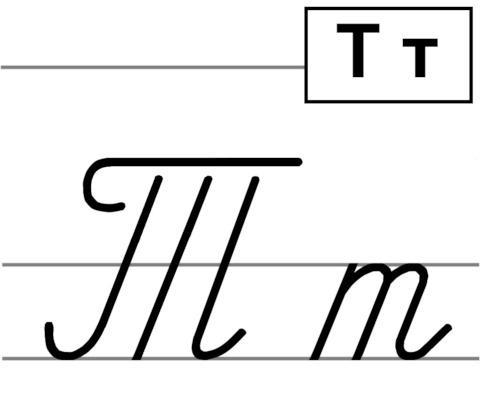
The Cyrillic cursive letter 'т' looks like an italic English 'm'. The origin of such writing is the полуустав handwriting style used for writing books in Russia. 'T' was like this:
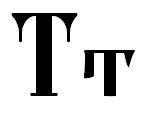
As you can see, it has long serifs coming down from the horizontal bar. And Russians mostly reached the line on which the letters stand, making 'т' look like 'ш' turned upside down.
You need to remember these seven Russian cursive letters. Write them down and practice recognizing them in the text.
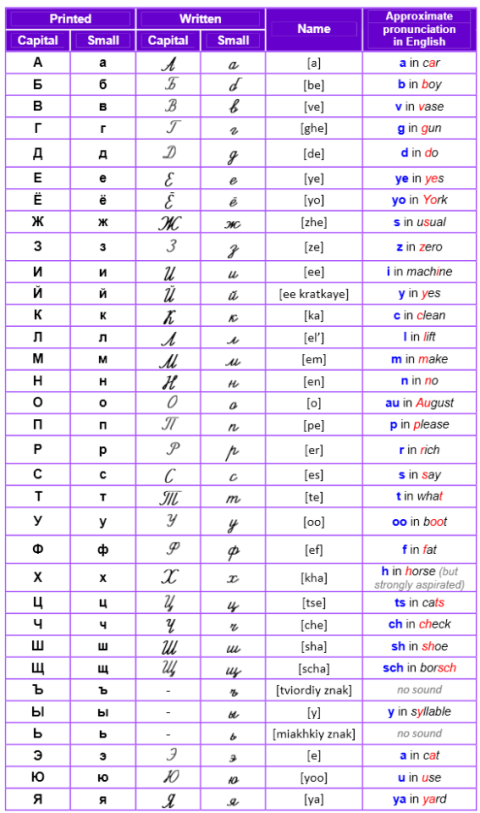
I recommend you to work with reading Russian cursive.
- Put two full alphabet line, from А to Я, then from а to я, one under another or take any text in Russian which you understand, where you know the words. It can be easy sentences or even simple separate words.
- Put it to MS Words or to any other text editor (or on-line Russian cursive generator) and just switch it to cursive because all text editors have this option. Actual modern cursive shorthand will not be differing much from that "italic" version.
- Read aloud this text a few times, at least 3 times.
- Do it during 2-3 days.
And you will feel that by the third day you already read in Russian in cursive really easily. So this is my task to you find the text or words of sentences to make them cursive and to practice reading them. I am sure there will be no problems at all. It's very easy.
Yes, the Propis' which is "official" cursive script they teach in schools, would look a bit different, but in real life adults who write a lot and have to be quick, often produce handwriting closer to that "italic" which you will see. The Propis', for example, usually recommends that you connect one letter to the previous one. In the real script, that is hardly done for more than a few letters. Or not done at all. Just like in "Italic" version of the font.
So ensure you can read the text in "Italic" script. Then it will be much easier for you to understand real Russian handwriting.
Write in Russian cursive
Write in Russian cursive for those people who like to write, who like to include mechanical memory in their learning process. And actually, the letters in handwriting looks a little bit different than in type and cursive. You can see it clearly that all the letters: the capital ones and the small ones - they really look like absolutely different. So you can learn how to write this way and why actually I recommend doing it. Because it really saves your time. It will take some time for learning it how to do it. But in general it will help you in future and you will not spend so much time to write, of course!
And believe me, it's a good skill and not extremely hard to learn how to do it. So actually let's pay attention to pictures and let's see some elements that are mainly used to form Russian cursive alphabet in handwriting.
By the way, I want to pay attention that we all are different people and will have different handwriting write. People wright absolutely different and you can meet like dozens or hundreds of different handwriting in Russian.
Video Russian Handwriting
Proper writing of handwritten Russian letters with Cyrillic handwriting font.

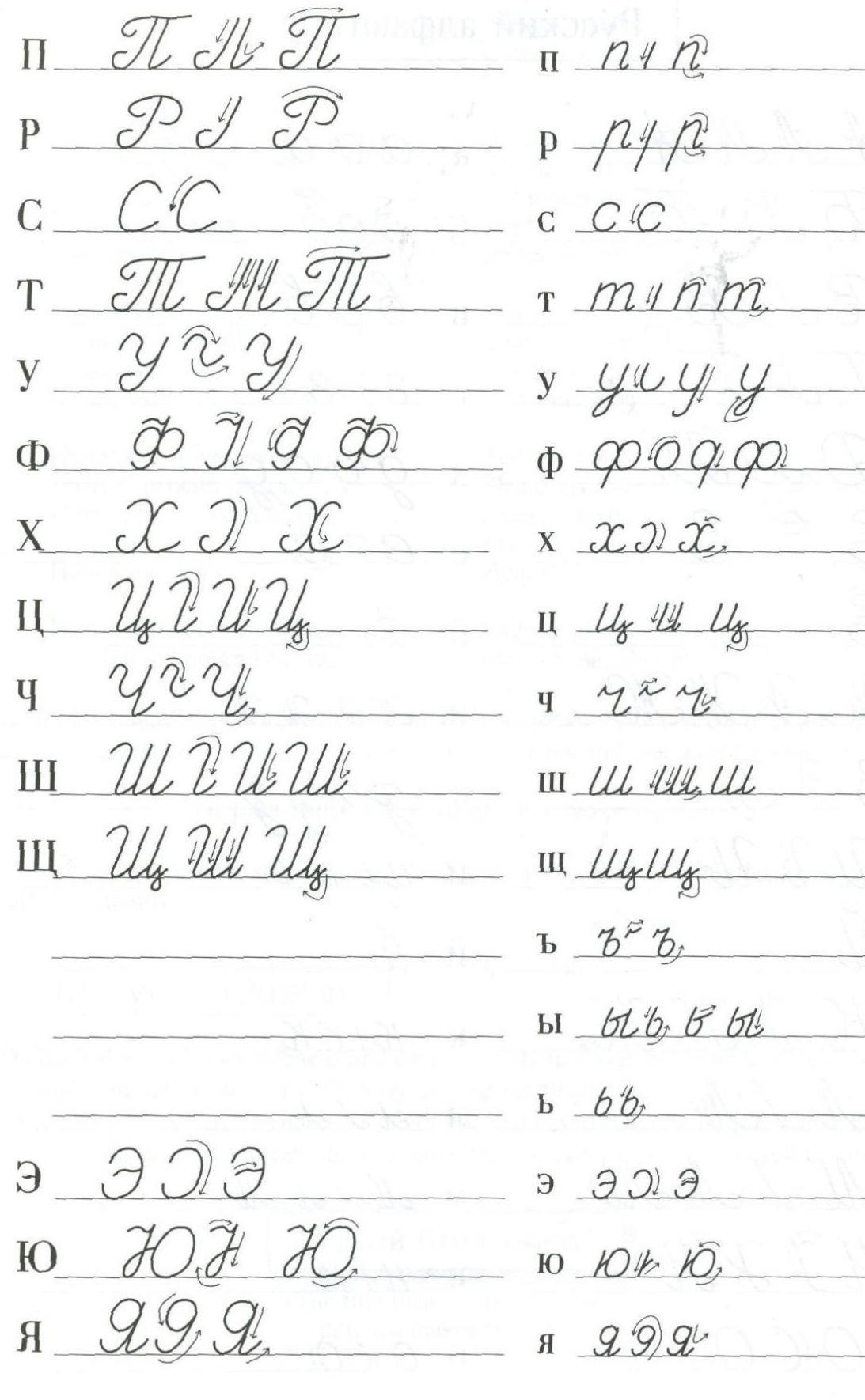

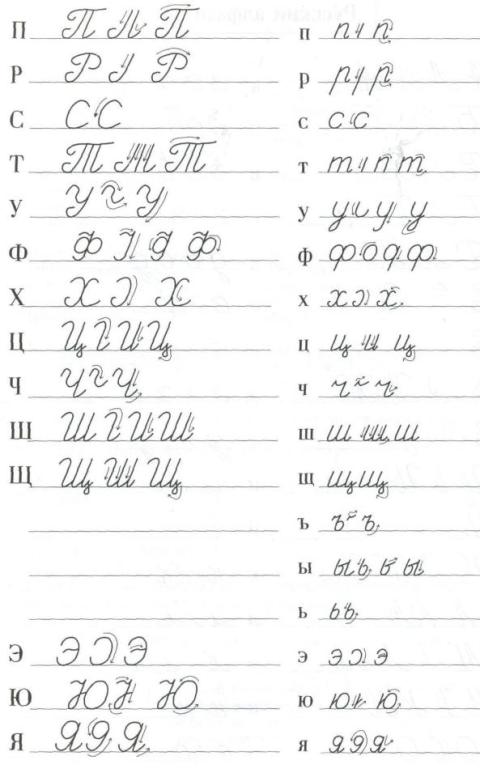
How to connect each letter of the Russian Cursive alphabet:
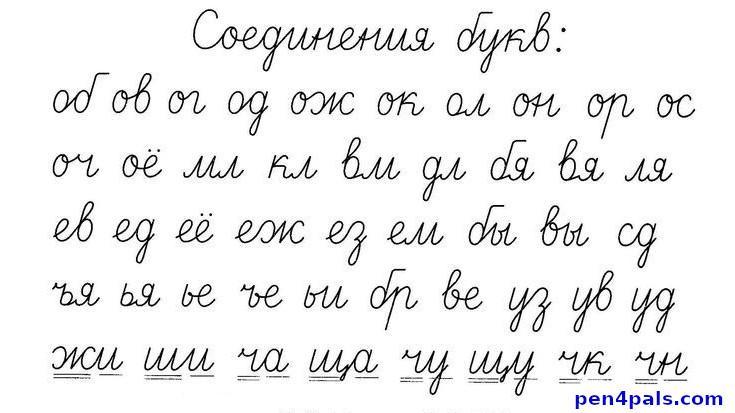
The live connecting of letters you can see at this online Russian Cursive Tutorial:
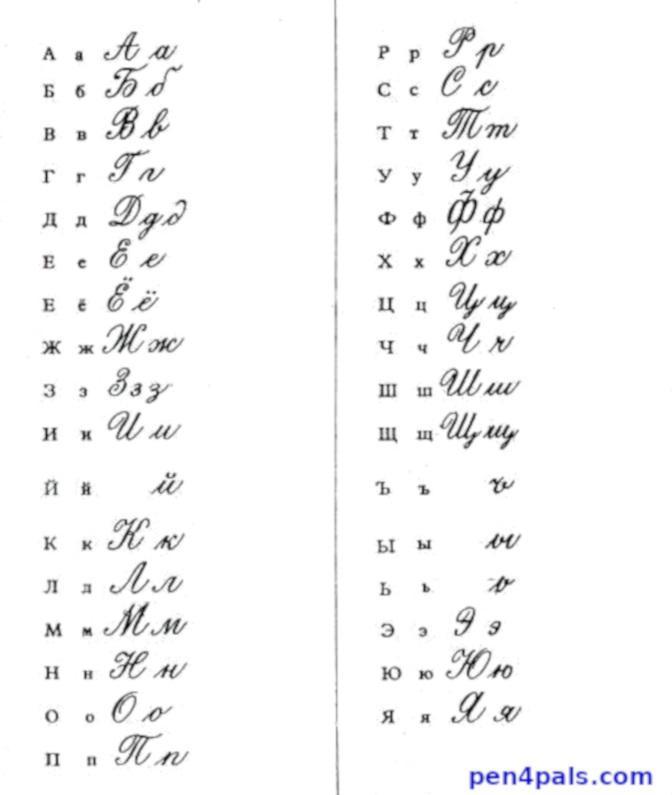
Russian handwriting training alphabet worksheets for improving handwriting for adults in pdf format. Propisi.
Contents:
Pages 1-2 The Russian alphabet.
Pages 3-5 70 most popular Russian words.
Pages 6-7 Russian proverbs.
Page 8 Pangrams, quotes from Turgenev and Tolstoy.
Download worksheets.
The workbook (прописи) for learning and practice Russian cursive writing.
Cursive Writing Practice Sheets A-z
Source: https://Pen4Pals.com/en/russian-cursive-handwriting-worksheets-free-download-pdf
Posted by: hensonkettere.blogspot.com

0 Response to "Cursive Writing Practice Sheets A-z"
Post a Comment